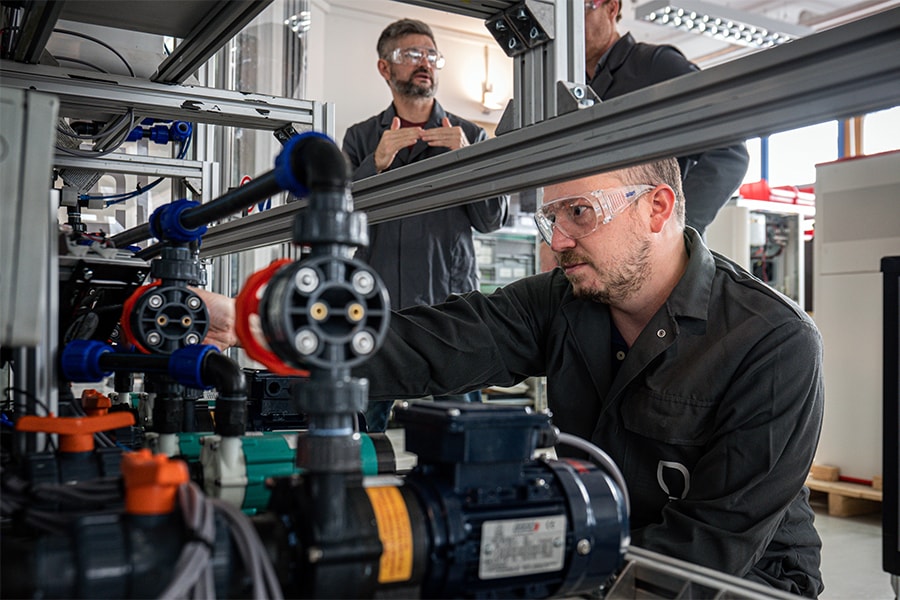
The next hurdle in Europe's energy transition: Being more enticing than NFTs
After getting initial startup money or grant funding, European businesses are struggling to raise funds for the kind of innovative, large-scale projects needed to complete the transition from carbon-spewing sources of energy
 An engineer works on a battery prototype at VoltStorage in Munich, Germany, on April 13, 2022. Investors often shy away from companies that build complex, expensive hardware. (Lena Mucha/The New York Times)
An engineer works on a battery prototype at VoltStorage in Munich, Germany, on April 13, 2022. Investors often shy away from companies that build complex, expensive hardware. (Lena Mucha/The New York Times)
LONDON — When Jakob Bitner was 7, he left Russia for Germany with his parents and sister. Twenty-eight years later, he is set on solving a vexing green-energy problem that could help Germany end its dependency on imported energy from Russia, or anywhere.
The problem: how to make wind and solar energy available 24 hours a day, seven days a week, even if the sun is not shining or the wind not blowing.
The company he co-founded in Munich in 2016, VoltStorage, found some success selling storage battery packs for solar power to homeowners in Europe. Now the company is developing much larger batteries — each about the size of a shipping container — based on a chemical process that can store and discharge electricity over days, not just hours like today’s most popular battery technology.
These ambitions to overcome the unreliable nature of renewable energy fit perfectly with Europe’s targets to reduce dependence on fossil fuels. But Bitner’s company is facing a frustrating reality that threatens to undercut Europe’s plans and poses a wider challenge in the global fight against climate change: a lack of money to finish the job.
VoltStorage needs “significantly” more money to develop its new battery technology, Bitner said. In 2020 and 2021, the company raised 11 million euros, or $12 million. Now, it is trying to raise up to 40 million euros more by this summer.
©2019 New York Times News Service







